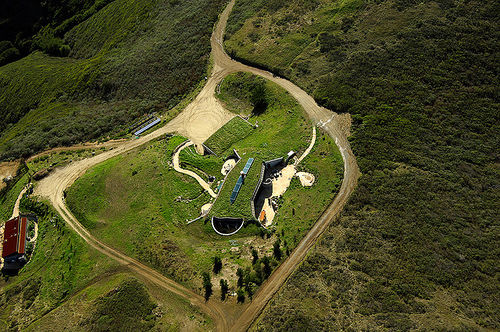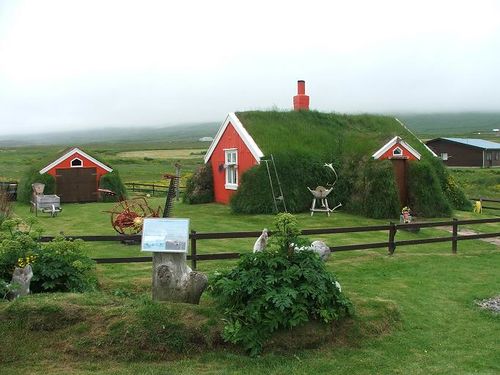Earth Sheltered Buildings
Unbeatable insulation from on-site materials. Save large amounts of energy in cooling and heating due to high thermal mass.
Factors to consider
- The expense and energy of building earth-sheltered buildings compared to conventional buildings. More effort is required to remove the earth, but effort is saved by not needing to provide an attractive finish to the surfaces which are covered by earth.
- The different form and visual impact - e.g. earth sheltered buildings may have less impact, and be less conventional in appearance, and create less shade (thus allowing more sun and space for plants to grow - see Urban agriculture).
- The earth may provide temperature buffering and/or insulation.
- Lower set buildings are much more vulnerable to flooding - important if there is any significant risk of flooding (consider even theoretical 1 in a 1000 year floods, noting that actual risks may be higher than theoretical risks, if a risk factor is overlooked).
Temperature buffering
A benefit claimed for earth sheltering is that it provides a moderate temperature buffer between the house and the environment. Is this accurate?
It is true that the temperature of the earth is often more moderate than the air - e.g. 10 deg C (50 deg F) when the air is -25 deg C (-10 deg F). However, heat transfer is a function not only of temperature difference, but of the thermal conductivity of the medium.
Question: Over the range of temperatures experienced by a house in a given climate (say, a cold, temperate or tropical climate) what is the difference in heat flux between a wall exposed to air and a wall exposed to earth? This might be expressed in a formula, and depicted in graphs. Of course this would be expected to vary by soil type and water content.
Related Pages
Other relevant pages
- Wikipedia: "Earth Sheltering"
- Appropedia: "Earth sheltered construction"

